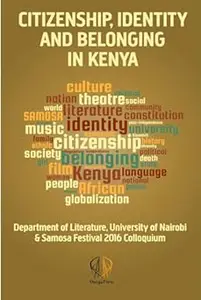
Free Download Zarina Patel, Zahid Rajan, "Citizenship, Identity and Belonging in Kenya"
English | 2017 | ISBN: 0995347476 | EPUB | pages: 158 | 0.5 mb
At the turn of the twentieth century, the print media in India was highly developed and very active in the country's liberation struggle. Hence South Asian migrants who came to Kenya were well aware of the importance of the press in advancing the anti-colonial campaign. The first Indian-owned newspaper in Kenya was the African Standard which Alibhai Mulla Jeevanjee established in 1901 in his fight for equal rights. That paper continues to serve Kenyans today as The Standard.
Nationalist Indians started several newspapers but were dogged by financial constraints, a factor used by the colonial authorities to close down the publications. The Indian-owned newspapers were bi-lingual and always had a section in English; thus exposing the colonial injustices they berated to both a national as well as international audience - a major, major vexation to the colonial authorities. In addition the Indians made their printing presses available to African journalists and editors who were barred, by a colonial law, from establishing their own.
The editor of the Colonial Times, G L Vidyarthi, was the first Kenyan to be jailed, in 1945, for sedition - his family today continues to be involved in the printing industry. After independence in 1963, the media scene greatly expanded and South Asian journalists ventured into print, photo, radio and TV. They played a vital role in presenting an Afro-centric, as opposed to a hitherto Euro-centric and colonial, view of Kenya and the continent. This was particularly so in the first decade of uhuru when African journalists were still finding their footing.
The South Asian journalists were on friendly terms with the Africans and at ease visiting their areas of work and residence. This access made it possible for them to report on the most relevant and up-to-date information and photo opportunities that were 'out of bounds' to their white competitors/colleagues.
However, the growing anti-Asian sentiments in Kenya and Idi Amin's expulsion of the Asians in Uganda in 1972 had a destabilizing effect on the community; and by the 1980s most of the South Asian journalists had emigrated to 'safer' pastures. The author was able to contact over sixty of them, including families of the deceased journalists, and collect their self-penned stories to present a fascinating and informative panorama of South Asian journalism in the 20th century.
